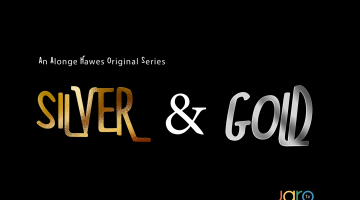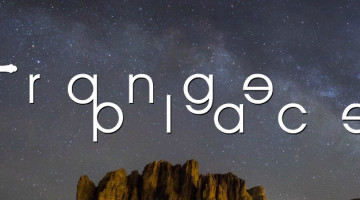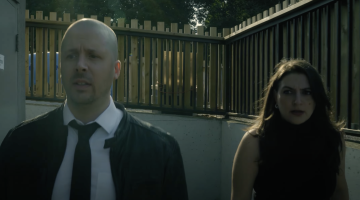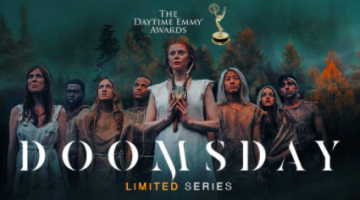For the uninitiated, ‘Dick Hopper Private Eye’ is a brand new neo-noir comedy series from a group of talented USC alums. The show clearly takes it’s cues from classic noir films, so I took advantage of a chance to chat with co-creators Tommy Fleming, Riley Smith and director Alex Vazquez about noir films, which were most influential, and how they made DHPE what it is. Here, in no particular order, are the films they brought up.
 M – Fritz Lang
M – Fritz Lang
Peter Lorre is the greatest film noir villain of all time. I think when it came to creating and then playing Vincent Dinero, there was no more palpable inspiration. He sweats, grunts, leers, screams, and drools his way to the finish line. But the story of M involves a multitude of other devious individuals. We tried to make Dick Hopper as convuluted as possible by adding scumbag upon scumbag until we had ourselves enough scumbags to go down to the lake and bag up all the scum (and still have a few scumbags left over). We cast a wide net and never shied away from absurdity. I wouldn’t say that M is particularly amusing (what’s the deal with child murderers? They just won’t quit! Am I right people?) but it’s not afraid to go over the top. The staged trial, featuring a frothing Lorre, at the end of the film is not so far from what we’ve got coming up in Dick Hopper’s season finale…. (8-12 out later this Summer) – Tommy
 The Man Who Wasn’t There – The Coen Bros
The Man Who Wasn’t There – The Coen Bros
I think its fairly safe to say we all agree the Coen brothers are the coolest brothers since Mario and Luigi. The Man Who Wasn’t There is such a cool original film that plays with the tropes of film noir so well. Similar to Dick Hopper, The Man Who Wasn’t There was made more recently then most film noir so they had a whole history of the genre to play with. Right since day one, when we were talking about the look and style of monologues and things like that, we were talking about this movie. I like to think that our bail bondsman is sort of the antithesis of the Tony Shaloub character from this film. I sort of see them as having simillar backgrounds, but Chip decided to be a full blown goofy optimist instead of having Shaloub’s mean streak. I also think Jon Politio’s character in the film was part of our inspiration for Gunter Goodford. You would have a hard time finding more disgusting men then these two characters. Although not their most famous film, The Man Who Wasn’t There is one of the Coen brothers slickest films. – Riley
 Twin Peaks – David Lynch, Mark Frost
Twin Peaks – David Lynch, Mark Frost
So I know it’s televison and I know it’s well outside of your typical noir wheelhouse but I was binge watching it on Netflix when Riley and I started writing Dick Hopper. I would say that no other film or show influenced my writing on Dick more. It made me giddy when I realized that the rabbit hole of Twin Peaks was never ending. Once you stop thinking “whodunnit?” and realize “everyonedunnit” you can allow yourself to forget about answers and get lost in that delightfully insidious web of hidden motives. While writing Dick, I don’t think we worried much about how we were gonna clean things up at the end because we knew it would be more fun to try and clean things up when they were spread all over the floor, stuck on the walls, and dripping form the ceiling. Also, the obvious lesson to learn from David Lynch is that nothing is too weird. We said yes to almost everything. Except Riley wanted to write a scene where two helicopters crash into each other and fall on someone’s head. We decided that wasn’t feasible. – Tommy
 The Maltese Falcon – John Huston
The Maltese Falcon – John Huston
If frank Gullihur isn’t our modern day Humphrey Bogart, then I’m not sure who is. But Dick’s got all sorts of shades of Sam Spade in him. From the snappy dialogue, to his suit, to his vices, he’s like a kid who grew up watching the Maltese Falcon, but never actually learned how to listen to people. I also loved the large cast of characters. Everyone was so strange in that movie. Also, our mayor has a little bit of Sidney Greenstreet in him, although Tyler makes Sydney Greenstreet look like Shirley Temple. The Maltese falcon is a classic movie that had a huge influence on later stuff too like Dick Tracy. It’s such a fun slow burn too. It’s just so detectivey! I think that’s the best word for it: “detectivey.” – Riley
 The Third Man – Carol Reed
The Third Man – Carol Reed
First of all, everyone should see this movie. It’s perfect. This was probably the number-one visual inspiration I had in terms of lighting and framing. Pretty much every shot in this movie can be hung and framed like a work of art. Lots of heavy contrast, sharp edges, shadows, and tilted frames. Hostile and mysterious. Best black-and-white cinematography I’ve ever seen. I gave this to my DP as a reference before we began shot listing, and we cherry-picked Reed’s style for some of my favorite moments in the series, like Daisy’s evil monologue in Episode 6. On set, we encouraged our gaffer to just go nuts with jagged, harsh light sources in an attempt to mimic this movie, and I think he had a lot of fun with that. The Third Man also has one of the greatest character introductions of all time, when this window light comes on and Joseph Cotten sees Orson Welles suddenly appear out of the shadows on the front doorstep across the way. And Welles has got that impish grin on his face! What a sneaky little twerp! I tried to remember that feeling when introducing new characters in the Dick Hopper ensemble, to give them their own little unique and dramatic opening moments. – Alex
Fans of these films may like to check out ‘Dick Hopper Private Eye” can navigate on over to their web page at http://dickhopper.com










Wait this is so cool! Love the behind the SEAMS look at Dick! Great influences influencing a great web series!